ICGOO在线商城 > 集成电路(IC) > PMIC - 稳压器 - DC DC 开关稳压器 > TPS61071DDCR
- 型号: TPS61071DDCR
- 制造商: Texas Instruments
- 库位|库存: xxxx|xxxx
- 要求:
| 数量阶梯 | 香港交货 | 国内含税 |
| +xxxx | $xxxx | ¥xxxx |
查看当月历史价格
查看今年历史价格
TPS61071DDCR产品简介:
ICGOO电子元器件商城为您提供TPS61071DDCR由Texas Instruments设计生产,在icgoo商城现货销售,并且可以通过原厂、代理商等渠道进行代购。 TPS61071DDCR价格参考。Texas InstrumentsTPS61071DDCR封装/规格:PMIC - 稳压器 - DC DC 开关稳压器, 可调式 升压 开关稳压器 IC 正 1.8V 1 输出 500mA(开关) SOT-23-6 细型,TSOT-23-6。您可以下载TPS61071DDCR参考资料、Datasheet数据手册功能说明书,资料中有TPS61071DDCR 详细功能的应用电路图电压和使用方法及教程。
TPS61071DDCR 是 Texas Instruments(德州仪器)推出的一款高效升压 DC-DC 开关稳压器,属于 PMIC(电源管理集成电路)系列。其主要应用场景包括: 1. 便携式电子设备: TPS61071DDCR 适用于需要高效电源转换的便携式设备,例如智能手机、平板电脑、便携式音频播放器和蓝牙耳机等。它能够将低电压电池输入(如单节锂离子电池或两节碱性电池)升压至更高的稳定输出电压,为系统负载供电。 2. 可穿戴设备: 在智能手表、健康追踪器和其他低功耗可穿戴设备中,TPS61071DDCR 提供高效的电源管理解决方案。其小尺寸封装和高效率特性非常适合对空间和能耗敏感的应用。 3. LED 照明驱动: 该器件可以用于驱动高亮度 LED(HBLED),例如在背光显示、指示灯或小型照明系统中。通过调节输出电流,它可以实现精确的亮度控制。 4. 物联网(IoT)设备: 在 IoT 领域,TPS61071DDCR 可以为传感器节点、无线模块和其他低功耗设备提供稳定的电源支持。其低静态电流特性有助于延长电池寿命。 5. 工业应用: 在工业环境中,TPS61071DDCR 可用于无线传感器网络、数据采集系统和远程监控设备中,确保在宽输入电压范围下仍能提供可靠的电源输出。 6. 医疗设备: 对于便携式医疗设备(如血糖仪、脉搏血氧仪等),TPS61071DDCR 的高效性和稳定性使其成为理想的电源管理选择。 总结来说,TPS61071DDCR 凭借其高效、紧凑的设计以及宽泛的工作电压范围,广泛应用于需要从低电压电池获取高电压输出的各种场景,特别是在注重能效和小型化的便携式及低功耗设备中表现出色。
| 参数 | 数值 |
| 产品目录 | 集成电路 (IC)半导体 |
| 描述 | IC REG BST SYNC ADJ 0.6A SOT6稳压器—开关式稳压器 Adj 600-mA Switch PWM Boost Converter |
| 产品分类 | |
| 品牌 | Texas Instruments |
| 产品手册 | |
| 产品图片 |
|
| rohs | 符合RoHS无铅 / 符合限制有害物质指令(RoHS)规范要求 |
| 产品系列 | 电源管理 IC,稳压器—开关式稳压器,Texas Instruments TPS61071DDCR- |
| 数据手册 | |
| 产品型号 | TPS61071DDCR |
| PWM类型 | - |
| 产品目录页面 | |
| 产品种类 | 稳压器—开关式稳压器 |
| 供应商器件封装 | 6-SOT |
| 其它名称 | 296-17227-1 |
| 包装 | 剪切带 (CT) |
| 同步整流器 | 是 |
| 商标 | Texas Instruments |
| 安装类型 | 表面贴装 |
| 安装风格 | SMD/SMT |
| 封装 | Reel |
| 封装/外壳 | SOT-23-6 细型,TSOT-23-6 |
| 封装/箱体 | SOT-23-6 |
| 工作温度 | -40°C ~ 85°C |
| 工作温度范围 | - 40 C to + 85 C |
| 工厂包装数量 | 3000 |
| 开关频率 | 1.2 MHz |
| 拓扑结构 | Boost |
| 最大工作温度 | + 85 C |
| 最大输入电压 | 5.5 V |
| 最小工作温度 | - 40 C |
| 最小输入电压 | 0.9 V |
| 标准包装 | 1 |
| 电压-输入 | 0.9 V ~ 5.5 V |
| 电压-输出 | 1.8 V ~ 5.5 V |
| 电流-输出 | 600mA |
| 类型 | 升压(升压) |
| 系列 | TPS61071 |
| 输入电压 | 0.9 V to 5.5 V |
| 输出数 | 1 |
| 输出电压 | 1.8 V to 5.5 V |
| 输出电流 | 150 mA |
| 输出端数量 | 1 Output |
| 输出类型 | 可调式 |
| 频率-开关 | 1.2MHz |



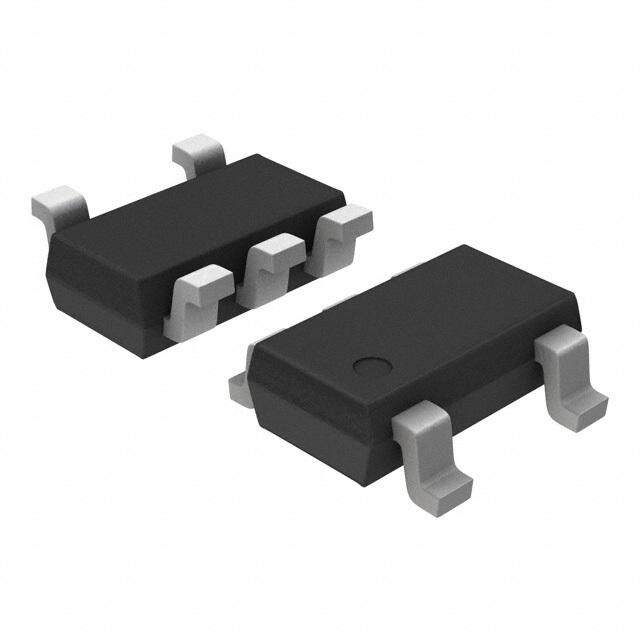


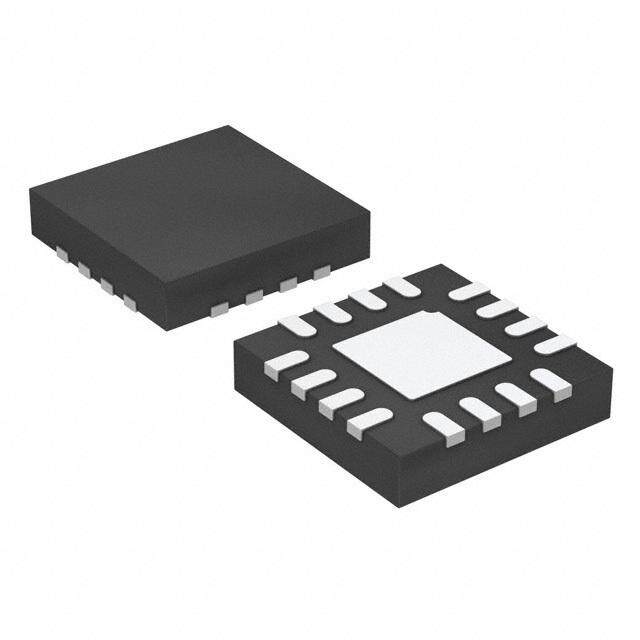

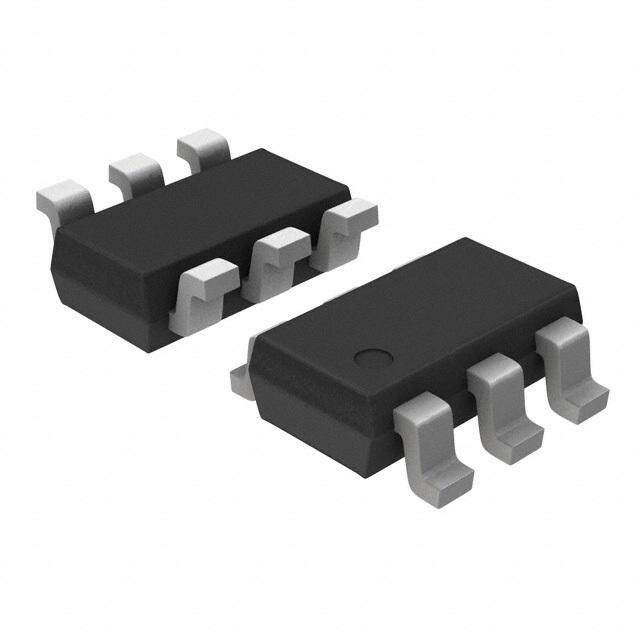

- 商务部:美国ITC正式对集成电路等产品启动337调查
- 曝三星4nm工艺存在良率问题 高通将骁龙8 Gen1或转产台积电
- 太阳诱电将投资9.5亿元在常州建新厂生产MLCC 预计2023年完工
- 英特尔发布欧洲新工厂建设计划 深化IDM 2.0 战略
- 台积电先进制程称霸业界 有大客户加持明年业绩稳了
- 达到5530亿美元!SIA预计今年全球半导体销售额将创下新高
- 英特尔拟将自动驾驶子公司Mobileye上市 估值或超500亿美元
- 三星加码芯片和SET,合并消费电子和移动部门,撤换高东真等 CEO
- 三星电子宣布重大人事变动 还合并消费电子和移动部门
- 海关总署:前11个月进口集成电路产品价值2.52万亿元 增长14.8%


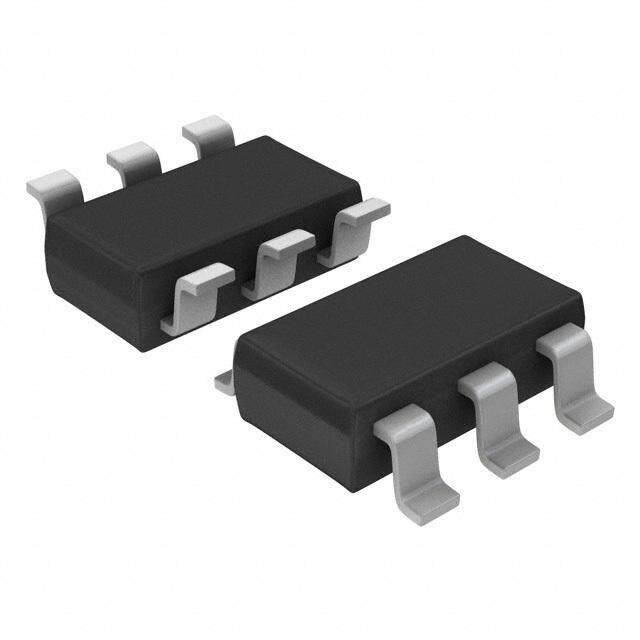
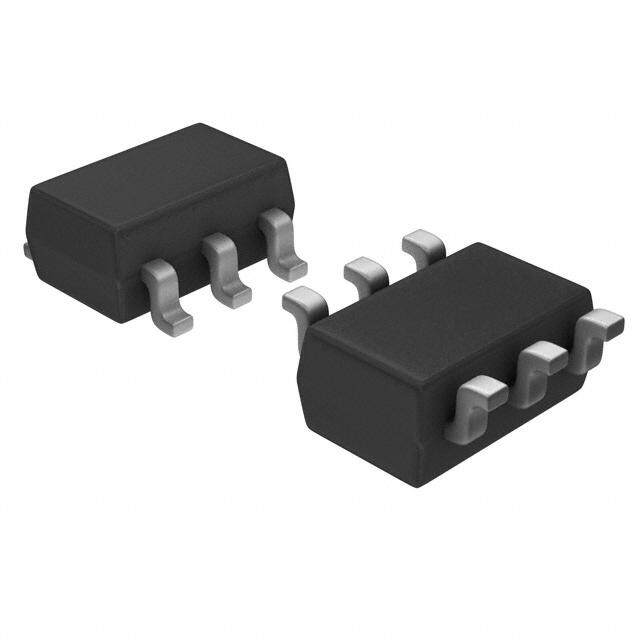


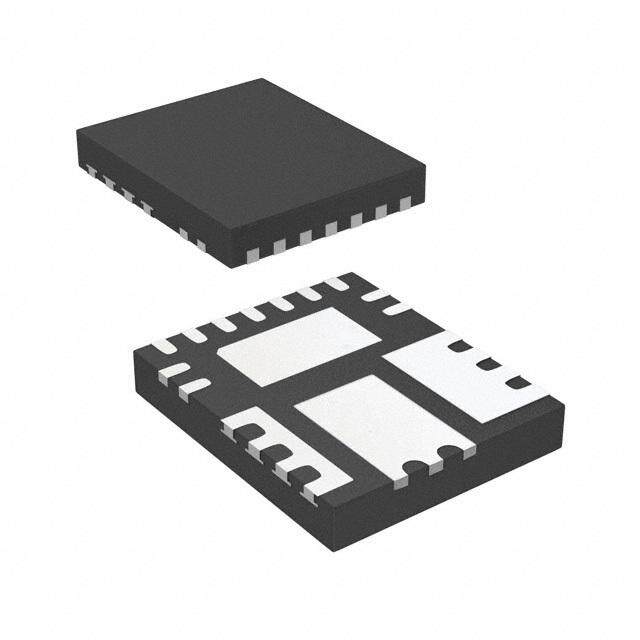
PDF Datasheet 数据手册内容提取
Product Sample & Technical Tools & Support & Folder Buy Documents Software Community TPS61070,TPS61071,TPS61072,TPS61073 SLVS510E–JULY2006–REVISEDMARCH2015 TPS6107x 90% Efficient Synchronous Boost Converter With 600-mA Switch 1 Features 3 Description • 90%EfficientSynchronousBoostConverter The TPS6107x devices provide a power supply 1 solution for products powered by either a one-cell, – 75-mAOutputCurrentat3.3VFrom0.9-V two-cell, or three-cell alkaline, NiCd or NiMH, or one- Input cell Li-ion or Li-polymer battery. Output currents can – 150-mAOutputCurrentat3.3VFrom1.8-V go as high as 75 mA while using a single-cell Input alkaline, and discharge it down to 0.9 V. It can also be used for generating 5 V at 200 mA from a 3.3-V • DeviceQuiescentCurrent:19 µA(Typ) rail or a Li-ion battery. The boost converter is based • InputVoltageRange:0.9Vto5.5V on a fixed frequency, pulse-width-modulation (PWM) • AdjustableOutputVoltageUpto5.5V controller using a synchronous rectifier to obtain • Power-SaveModeVersionAvailablefor maximum efficiency. At low load currents the TPS61070 and TPS61073 enter the power-save ImprovedEfficiencyatLowOutputPower mode to maintain a high efficiency over a wide load • LoadDisconnectDuringShutdown current range. The power-save mode is disabled in • OvertemperatureProtection the TPS61071 and TPS61072, forcing the converters • Small6-PinThinSOT23Package to operate at a fixed switching frequency. The maximum peak current in the boost switch is typically 2 Applications limitedtoavalueof600mA. The TPS6107x output voltage is programmed by an • AllOne-Cell,Two-Cell,andThree-CellAlkaline, external resistor divider. The converter can be NiCdorNiMHorSingle-CellLi disabled to minimize battery drain. During shutdown, Battery-PoweredProducts the load is completely disconnected from the battery. • PortableAudioPlayers The device is packaged in a 6-pin thin SOT23 • PDAs package(DDC). • CellularPhones DeviceInformation(1) • PersonalMedicalProducts PARTNUMBER PACKAGE BODYSIZE(NOM) • WhiteLEDLighting TPS61070 TPS61071 SOT(6) 2.90mmx1.60mm TPS61072 TPS61073 (1) For all available packages, see the orderable addendum at theendofthedatasheet. 4 Typical Application Circuit L1 4.7µH SW VOUT C2 V3.O3 V UpTo R1 10µF 100 mA VBAT FB 0.9-VTo VO C1 EN R2 10µF GND TPS61070 1 An IMPORTANT NOTICE at the end of this data sheet addresses availability, warranty, changes, use in safety-critical applications, intellectualpropertymattersandotherimportantdisclaimers.PRODUCTIONDATA.
TPS61070,TPS61071,TPS61072,TPS61073 SLVS510E–JULY2006–REVISEDMARCH2015 www.ti.com Table of Contents 1 Features.................................................................. 1 10.3 FeatureDescription.................................................9 2 Applications........................................................... 1 10.4 DeviceFunctionalModes......................................11 3 Description............................................................. 1 11 ApplicationandImplementation........................ 12 4 TypicalApplicationCircuit................................... 1 11.1 ApplicationInformation..........................................12 11.2 TypicalApplication................................................12 5 RevisionHistory..................................................... 2 11.3 SystemExamples.................................................17 6 DeviceComparisonTable..................................... 3 12 PowerSupplyRecommendations..................... 19 7 PinConfigurationandFunctions......................... 3 13 Layout................................................................... 19 8 Specifications......................................................... 4 13.1 LayoutGuidelines.................................................19 8.1 AbsoluteMaximumRatings......................................4 13.2 LayoutExample....................................................19 8.2 ESDRatings..............................................................4 13.3 ThermalConsiderations........................................20 8.3 RecommendedOperatingConditions.......................4 14 DeviceandDocumentationSupport................. 21 8.4 ThermalInformation..................................................4 14.1 DeviceSupport......................................................21 8.5 ElectricalCharacteristics...........................................5 14.2 RelatedLinks........................................................21 8.6 TypicalCharacteristics..............................................6 14.3 Trademarks...........................................................21 9 ParameterMeasurementInformation..................8 14.4 ElectrostaticDischargeCaution............................21 10 DetailedDescription............................................. 9 14.5 Glossary................................................................21 10.1 Overview.................................................................9 15 Mechanical,Packaging,andOrderable 10.2 FunctionalBlockDiagram.......................................9 Information........................................................... 21 5 Revision History ChangesfromRevisionD(December2014)toRevisionE Page • ChangedtheDeviceOptionsTableTo:DeviceComparisonTableandincludedthePartNumbercolumn ........................ 3 ChangesfromRevisionC(March2009)toRevisionD Page • AddedESDRatingstable,FeatureDescriptionsection,DeviceFunctionalModes,ApplicationandImplementation section,PowerSupplyRecommendationssection,Layoutsection,DeviceandDocumentationSupportsection,and Mechanical,Packaging,andOrderableInformationsection.................................................................................................. 1 2 SubmitDocumentationFeedback Copyright©2006–2015,TexasInstrumentsIncorporated ProductFolderLinks:TPS61070 TPS61071 TPS61072 TPS61073
TPS61070,TPS61071,TPS61072,TPS61073 www.ti.com SLVS510E–JULY2006–REVISEDMARCH2015 6 Device Comparison Table OUTPUTVOLTAGE ENTHRESHOLD PARTNUMBER POWER-SAVEMODE OPERATINGFREQUENCY DC/DC REFERENCEVOLTAGE TPS61070DDC Adjustable Enabled 1200kHz VBAT TPS61071DDC Adjustable Disabled 1200kHz VBAT TPS61072DDC Adjustable Disabled 600kHz VBAT TPS61073DDC Adjustable Enabled 1200kHz 1.8VLogic 7 Pin Configuration and Functions DDCPackage 6Pins TopView VBAT VOUT FB 6 5 4 A B C 1 2 3 SW GND EN PinFunctions PIN I/O DESCRIPTION NAME NO. EN 3 I Enableinput(1/VBATenabled,0/GNDdisabled) FB 4 I Voltagefeedbackforprogrammingtheoutputvoltage GND 2 — ICgroundconnectionforlogicandpower SW 1 I Boostandrectifyingswitchinput VBAT 6 I Supplyvoltage VOUT 5 O Boostconverteroutput Copyright©2006–2015,TexasInstrumentsIncorporated SubmitDocumentationFeedback 3 ProductFolderLinks:TPS61070 TPS61071 TPS61072 TPS61073
TPS61070,TPS61071,TPS61072,TPS61073 SLVS510E–JULY2006–REVISEDMARCH2015 www.ti.com 8 Specifications 8.1 Absolute Maximum Ratings overoperatingfree-airtemperaturerange(unlessotherwisenoted)(1) MIN MAX UNIT InputvoltageonSW,VOUT,VBAT,EN,FB -0.3 7 V Operatingvirtualjunctiontemperature,T -40 150 °C J Storagetemperature,T -65 150 °C stg (1) StressesbeyondthoselistedunderAbsoluteMaximumRatingsmaycausepermanentdamagetothedevice.Thesearestressratings only,andfunctionaloperationofthedeviceattheseoranyotherconditionsbeyondthoseindicatedunderRecommendedOperating Conditionsisnotimplied.Exposuretoabsolute-maximum-ratedconditionsforextendedperiodsmayaffectdevicereliability. 8.2 ESD Ratings VALUE UNIT Human-bodymodel(HBM),perANSI/ESDA/JEDECJS-001(1) ±2000 V(ESD) Electrostaticdischarge Charged-devicemodel(CDM),perJEDECspecificationJESD22- V C101(2) ±750 (1) JEDECdocumentJEP155statesthat500-VHBMallowssafemanufacturingwithastandardESDcontrolprocess.Manufacturingwith lessthan500-VHBMispossiblewiththenecessaryprecautions. (2) JEDECdocumentJEP157statesthat250-VCDMallowssafemanufacturingwithastandardESDcontrolprocess.Manufacturingwith lessthan250-VCDMispossiblewiththenecessaryprecautions. 8.3 Recommended Operating Conditions MIN NOM MAX UNIT SupplyvoltageatVBAT,V (TPS61070,TPS61071,TPS61072) 0.9 5.5 V I SupplyvoltageatVBAT,V (TPS61073) 2.3 5.5 V I Operatingfreeairtemperaturerange,T -40 85 °C A Operatingvirtualjunctiontemperaturerange,T -40 125 °C J 8.4 Thermal Information TPS6107x THERMALMETRIC(1) DDC UNIT 6PINS R Junction-to-ambientthermalresistance 139.1 θJA R Junction-to-case(top)thermalresistance 34.8 θJC(top) R Junction-to-boardthermalresistance 42.5 θJB °C/W ψ Junction-to-topcharacterizationparameter 1.4 JT ψ Junction-to-boardcharacterizationparameter 40.7 JB R Junction-to-case(bottom)thermalresistance n/a θJC(bot) (1) Formoreinformationabouttraditionalandnewthermalmetrics,seetheICPackageThermalMetricsapplicationreport,SPRA953. 4 SubmitDocumentationFeedback Copyright©2006–2015,TexasInstrumentsIncorporated ProductFolderLinks:TPS61070 TPS61071 TPS61072 TPS61073
TPS61070,TPS61071,TPS61072,TPS61073 www.ti.com SLVS510E–JULY2006–REVISEDMARCH2015 8.5 Electrical Characteristics overrecommendedfree-airtemperaturerangeandoverrecommendedinputvoltagerange(typicalatanambienttemperature rangeof25°C)(unlessotherwisenoted) PARAMETER TESTCONDITIONS MIN TYP MAX UNIT DC/DCSTAGE Minimuminputvoltagerangeforstart- up R =270Ω 1.1 1.2 L (TPS61070,TPS61071,TPS61072) Minimuminputvoltagerangeforstart- R =270Ω 2.3 V up(TPS61073) L V I Inputvoltagerange,afterstart-up T =25°C 0.9 5.5 (TPS61070,TPS61071,TPS61072) A Inputvoltagerange,afterstart-up 2.3 5.5 (TPS61073) Outputvoltagerange(TPS61070, 1.8 5.5 V TPS61071,TPS61072) V O Outputvoltagerange(TPS61073) 2.3 5.5 V Feedbackvoltage 495 500 505 mV (FB) Oscillatorfrequency(TPS61070, 960 1200 1440 f TPS61071,TPS61073) kHz Oscillatorfrequency(TPS61072) 480 600 720 I Switchcurrentlimit VOUT=3.3V 500 600 700 mA (SW) Start-upcurrentlimit 0.5×I mA SW Boostswitch-onresistance VOUT=3.3V 480 mΩ Rectifyingswitch-onresistance VOUT=3.3V 600 mΩ Totalaccuracy(includinglineand 3% loadregulation) Lineregulation 1% Loadregulation 1% Quiescentcurrent VBAT 0.5 1 µA I =0mA,V =VBAT=1.2V, (TPS61070,TPS61071, O (EN) TPS61072) VOUT VOUT=3.3V,TA=25°C 19 30 µA Quiescentcurrent VBAT I =0mA,V =1.8V,VBAT=2.4V, 1 1.5 µA O (EN) (TPS61073) VOUT VOUT=5V,TA=25°C 30 50 µA Shutdowncurrent(TPS61070, V =0V,VBAT=1.2V,T =25°C 0.05 0.5 µA TPS61071,TPS61072) (EN) A Shutdowncurrent(TPS61073) V =0V,VBAT=3.6V,T =25°C 0.05 1.5 µA (EN) A CONTROLSTAGE V Undervoltagelockoutthreshold V voltagedecreasing 0.8 V (UVLO) (BAT) ENinputlowvoltage 0.2× V (TPS61070,TPS61071,TPS61072) VBAT V IL ENinputlowvoltage(TPS61073) 0.4 ENinputhighvoltage 0.8× V (TPS61070,TPS61071,TPS61072) VBAT V IH ENinputhighvoltage(TPS61073) 1.2 ENinputcurrent ClampedonGNDorVBAT 0.01 0.1 µA (TPS61070,TPS61071,TPS61072) ENinputcurrent(TPS61073) ClampedonGNDorVBAT 0.01 0.3 µA Overtemperatureprotection 140 °C Overtemperaturehysteresis 20 °C Copyright©2006–2015,TexasInstrumentsIncorporated SubmitDocumentationFeedback 5 ProductFolderLinks:TPS61070 TPS61071 TPS61072 TPS61073
TPS61070,TPS61071,TPS61072,TPS61073 SLVS510E–JULY2006–REVISEDMARCH2015 www.ti.com 8.6 Typical Characteristics 8.6.1 TableofGraphs FIGURE Maximumoutputcurrent vsInputvoltage Figure1 vsOutputcurrent Figure2 vsOutputcurrent Figure3 Efficiency vsOutputcurrent Figure4 vsInputvoltage Figure5 vsInputvoltage Figure6 vsOutputcurrent Figure7 Outputvoltage vsOutputcurrent Figure8 NoloadsupplycurrentintoVOUT vsInputvoltage Figure9 600 100 TPS61070 VBAT = 1.2 V 550 90 VO = 1.8 V 500 A 80 m − 450 VO = 3.3 V ent 400 70 Curr 350 VO = 5 V − % 60 put 300 VO = 1.8 V ncy 50 VBAT = 0.9 V m Out 250 Efficie 40 mu 200 xi 30 Ma 150 TPS61071 20 100 VO = 1.8 V 10 50 0 0 0.9 1.3 1.7 2.1 2.5 2.9 3.3 3.7 4.1 4.5 4.9 0.01 0.10 1 10 100 1 k VI − Input Voltage − V IO − Output Current − mA Figure1.MaximumOutputCurrentvsInputVoltage Figure2.EfficiencyvsOutputCurrent 100 100 TPS61070 TPS61070 90 VO = 3.3 V 90 VO = 5 V 80 80 70 70 % % VBAT = 1.2 V − 60 − 60 VBAT = 1.8 V y y nc 50 nc 50 VBAT = 2.4 V e VBAT = 0.9 V e ci ci VBAT = 3.6 V Effi 40 VBAT = 1.8 V Effi 40 30 30 VBAT = 2.4 V 20 20 TPS61071 TPS61071 VO = 5 V 10 VO = 3.3 V 10 0 0 0.01 0.10 1 10 100 1 k 0.01 0.10 1 10 100 1 k IO − Output Current − mA IO − Output Current − mA Figure3.EfficiencyvsOutputCurrent Figure4.EfficiencyvsOutputCurrent 6 SubmitDocumentationFeedback Copyright©2006–2015,TexasInstrumentsIncorporated ProductFolderLinks:TPS61070 TPS61071 TPS61072 TPS61073
TPS61070,TPS61071,TPS61072,TPS61073 www.ti.com SLVS510E–JULY2006–REVISEDMARCH2015 100 100 TPS61070 95 TPS61070 95 VO = 5 V VO = 3.3 V 90 90 IO = 5 mA 85 85 Efficiency − % 778050 IOI O= =5 I01O 0m =0A 5m mAA Efficiency − % 778050 IO = 10 mA 65 TPS61071 65 IO = 60 mA 60 VO = 3.3 V 60 IO = 5 mA 55 55 TPS61071 VO = 5 V 50 50 0.9 1.1 1.3 1.5 1.7 1.9 2.1 2.3 2.5 2.7 2.9 3.1 3.3 0.9 1.4 1.9 2.4 2.9 3.4 3.9 4.4 4.9 VI − Input Voltage − V VI − Input Voltage − V Figure5.EfficiencyvsInputVoltage Figure6.EfficiencyvsInputVoltage 3.35 5.1 VBAT = 3.6 V VBAT = 2.4 V TPS61070 VO = 3.3 V TPS61070 5.05 VO = 5 V Output Voltage − V 3.30 Output Voltage − V 4.955 − O 3.25 − O 4.9 TPS61071 V V VO = 5 V 4.85 TPS61071 VO = 3.3 V 3.20 4.8 1 10 100 1000 1 10 100 1000 IO − Output Current − mA IO − Output Current − mA Figure7.OutputVoltagevsOutputCurrent Figure8.OutputVoltagevsOutputCurrent 22 A TA = 85(cid:1)C 20 m− T U o VO 18 TA = 25(cid:1)C nt urrent I 16 TA = −40(cid:1)C C y pl p 14 u S d a Lo 12 No VO = 3.3 V VI = 0.9 V to 5.5 V 10 0.9 1.5 2.5 3.5 4.5 5.5 VI − Input Voltage − V Figure9.NoLoadSupplyCurrentIntoVOUTvsInputVoltage Copyright©2006–2015,TexasInstrumentsIncorporated SubmitDocumentationFeedback 7 ProductFolderLinks:TPS61070 TPS61071 TPS61072 TPS61073
TPS61070,TPS61071,TPS61072,TPS61073 SLVS510E–JULY2006–REVISEDMARCH2015 www.ti.com 9 Parameter Measurement Information L1 SW VOUT VCC C2 Boost Output R1 VBAT FB Power C1 EN R2 Supply GND TPS6107x List of Components: U1 =TPS61070DDC L1 = 4.7 µH Wurth Elektronik 744031004 C1 = 2 x 4.7µF, 0603, X7R/X5R Ceramic C2 = 4 x 4.7µF, 0603, X7R/X5R Ceramic Figure10. ParameterMeasurementSchematic 8 SubmitDocumentationFeedback Copyright©2006–2015,TexasInstrumentsIncorporated ProductFolderLinks:TPS61070 TPS61071 TPS61072 TPS61073
TPS61070,TPS61071,TPS61072,TPS61073 www.ti.com SLVS510E–JULY2006–REVISEDMARCH2015 10 Detailed Description 10.1 Overview The TPS6107x devices provide a power supply solution for products powered by either a one-cell, two-cell, or three-cell alkaline, NiCd or NiMH, or one-cell Li-ion or Li-polymer battery. Output currents can go as high as 75 mA while using a single-cell alkaline, and discharge it down to 0.9 V. It can also be used for generating 5 V at 200 mA from a 3.3 V rail or a Li-ion battery. The boost converter is based on a fixed frequency, pulse-width- modulation (PWM) controller using a synchronous rectifier to obtain maximum efficiency. At low load currents the TPS61070 and TPS61073 enter the power-save mode to maintain a high efficiency over a wide load current range. The power-save mode is disabled in the TPS61071 and TPS61072, forcing the converters to operate at a fixed switching frequency. The maximum peak current in the boost switch is typically limited to a value of 600 mA. The TPS6107x output voltage is programmed by an external resistor divider. The converter can be disabled tominimizebatterydrain.Duringshutdown,theloadiscompletelydisconnectedfromthebattery. 10.2 Functional Block Diagram SW Backgate Control VBAT VOUT VOUT 5 kW 3 pF Vmax Gate Control Control GND Error Amplifier 160 kW 50 kW _ FB Regulator + 5 pF + Vref = 0.5 V _ GND Control Logic Oscillator Temperature Control EN GND 10.3 Feature Description 10.3.1 ControllerCircuit The controller circuit of the device is based on a fixed frequency multiple feedforward controller topology. Input voltage, output voltage, and voltage drop on the NMOS switch are monitored and forwarded to the regulator. So, changes in the operating conditions of the converter directly affect the duty cycle and must not take the indirect andslowwaythroughthecontrolloopandtheerroramplifier.Thecontrolloop,determinedbytheerroramplifier, only has to handle small signal errors. The input for it is the feedback voltage on the FB pin. It is compared with theinternalreferencevoltagetogenerateanaccurateandstableoutputvoltage. Copyright©2006–2015,TexasInstrumentsIncorporated SubmitDocumentationFeedback 9 ProductFolderLinks:TPS61070 TPS61071 TPS61072 TPS61073
TPS61070,TPS61071,TPS61072,TPS61073 SLVS510E–JULY2006–REVISEDMARCH2015 www.ti.com Feature Description (continued) ThepeakcurrentoftheNMOSswitchisalsosensedtolimitthemaximumcurrentflowingthroughtheswitchand the inductor. The typical peak-current limit is set to 600 mA. An internal temperature sensor prevents the device fromgettingoverheatedincaseofexcessivepowerdissipation. 10.3.1.1 SynchronousRectifier The device integrates an N-channel and a P-channel MOSFET transistor to realize a synchronous rectifier. Because the commonly used discrete Schottky rectifier is replaced with a low R PMOS switch, the power DS(on) conversionefficiencyreachesvaluesabove90%.Aspecialcircuitisappliedtodisconnecttheloadfromtheinput during shutdown of the converter. In conventional synchronous rectifier circuits, the backgate diode of the high- side PMOS is forward biased in shutdown and allows current flowing from the battery to the output. However, this device uses a special circuit which takes the cathode of the backgate diode of the high-side PMOS and disconnectsitfromthesourcewhentheregulatorisnotenabled(EN=low). The benefit of this feature for the system design engineer is that the battery is not depleted during shutdown of the converter. No additional components must be added to the design to make sure that the battery is disconnectedfromtheoutputoftheconverter. 10.3.1.2 DeviceEnable The device is put into operation when EN is set high. It is put into a shutdown mode when EN is set to GND. In shutdown mode, the regulator stops switching, all internal control circuitry is switched off, and the load is isolated from the input (as described in the Synchronous Rectifier section). This also means that the output voltage can drop below the input voltage during shutdown. During start-up of the converter, the duty cycle and the peak currentarelimitedinordertoavoidhigh-peakcurrentsdrawnfromthebattery. 10.3.1.3 UndervoltageLockout An undervoltage lockout function prevents the device from operating if the supply voltage on VBAT is lower than approximately 0.8 V. When in operation and the battery is being discharged, the device automatically enters the shutdown mode if the voltage on VBAT drops below approximately 0.8 V. This undervoltage lockout function is implementedinordertopreventthemalfunctioningoftheconverter. 10.3.1.4 SoftStartandShort-CircuitProtection When the device enables, the internal start-up cycle starts with the first step, the precharge phase. During precharge, the rectifying switch is turned on until the output capacitor is charged to a value close to the input voltage. The rectifying switch is current limited during this phase. The current limit increases with the output voltage. This circuit also limits the output current under short-circuit conditions at the output. Figure 11 shows the typicalprechargecurrentvsoutputvoltageforspecificinputvoltages: 10 SubmitDocumentationFeedback Copyright©2006–2015,TexasInstrumentsIncorporated ProductFolderLinks:TPS61070 TPS61071 TPS61072 TPS61073
TPS61070,TPS61071,TPS61072,TPS61073 www.ti.com SLVS510E–JULY2006–REVISEDMARCH2015 Feature Description (continued) 0.15 0.14 0.13 0.12 0.11 A 0.1 nt - 0.09 e urr 0.08 VBAT = 3.6 V VBAT = 5 V C VBAT = 2.4 V e 0.07 g ar 0.06 h c e 0.05 VBAT = 1.8 V r P 0.04 0.03 0.02 VBAT = 1.2 V 0.01 0 0 0.5 1 1.5 2 2.5 3 3.5 4 4.5 5 V - Output Voltage - V O Figure11. PrechargeandShort-CircuitCurrent After charging the output capacitor to the input voltage, the device starts switching. If the input voltage is below 1.8 V, the device works with a fixed duty cycle of 70% until the output voltage reaches 1.8 V. After that the duty cycle is set depending on the input output voltage ratio. Until the output voltage reaches its nominal value, the boostswitchcurrentlimitissetto50%ofitsnominalvaluetoavoidhighpeakcurrentsatthebatteryduringstart- up. As soon as the output voltage is reached, the regulator takes control, and the switch current limit is set back to100%. 10.4 Device Functional Modes 10.4.1 Power-SaveMode The TPS61070 and TPS61073 are capable of operating in two different modes. At light loads, when the inductor current becomes zero, they automatically enter the power-save mode to improve efficiency. In the power-save mode, the converters only operate when the output voltage trips below a set threshold voltage. It ramps up the output voltage with one or several pulses and returns to the power-save mode once the output voltage exceeds the set threshold voltage. If output power demand increases and the inductor current no longer goes below zero, the device again enters the fixed PWM mode. In this mode, there is no difference between the PWM only versionsTPS61071andTPS61072andthepower-savemodeenabledversionsTPS61070andTPS61073. Copyright©2006–2015,TexasInstrumentsIncorporated SubmitDocumentationFeedback 11 ProductFolderLinks:TPS61070 TPS61071 TPS61072 TPS61073
TPS61070,TPS61071,TPS61072,TPS61073 SLVS510E–JULY2006–REVISEDMARCH2015 www.ti.com 11 Application and Implementation NOTE Information in the following applications sections is not part of the TI component specification, and TI does not warrant its accuracy or completeness. TI’s customers are responsible for determining suitability of components for their purposes. Customers should validateandtesttheirdesignimplementationtoconfirmsystemfunctionality. 11.1 Application Information The TPS6107x DC-DC converters are intended for systems powered by a single-cell, up to triple-cell alkaline, NiCd, NiMH battery with a typical terminal voltage between 0.9 V and 5.5 V. They can also be used in systems powered by one-cell Li-Ion or Li-Polymer with a typical voltage between 2.5 V and 4.2 V. Additionally, any other voltage source with a typical output voltage between 0.9 V and 5.5 V can power systems where the TPS6107x is used. Due to the nature of boost converters, the output voltage regulation is only maintained when the input voltageappliedislowerthantheprogrammedoutputvoltage. 11.2 Typical Application L1 SW VOUT VCC C2 Boost Output R1 VBAT FB Power C1 R2 EN Supply GND TPS61070 Figure12. TypicalApplicationCircuitforAdjustableOutputVoltageOption 11.2.1 DesignRequirements In this example, TPS61070 is used to design a 3.3-V power supply with 75-mA output current capability. The TPS61200canbepoweredbyeitherasingle-cell,two-cell,orthree-cellalkaline,NiCdorNiMH,orone-cellLi-Ion or Li-Polymer battery. In this example, the input voltage range is from 0.9 V to 1.65 V for single-cell alkaline input design. 11.2.2 DetailedDesignProcedure 11.2.2.1 ProgrammingtheOutputVoltage TheoutputvoltageoftheTPS6107xdc/dcconvertercanbeadjustedwithanexternalresistordivider.Thetypical value of the voltage at the FB pin is 500 mV. The maximum recommended value for the output voltage is 5.5 V. The current through the resistive divider should be about 100 times greater than the current into the FB pin. The typical current into the FB pin is 0.01 µA, and the voltage across R2 is typically 500 mV. Based on those two values,therecommendedvalueforR2shouldbelowerthan500kΩ,inordertosetthedividercurrentat1 µAor higher. Because of internal compensation circuitry, the value for this resistor should be in the range of 200 kΩ. Fromthat,thevalueofresistorR1,dependingontheneededoutputvoltage(V ),iscalculatedusingEquation1: O (cid:4)V (cid:5) (cid:4) V (cid:5) R1(cid:3)R2(cid:1) O (cid:2)1 (cid:3)180k(cid:1)(cid:1) O (cid:2)1 V 500mV FB (1) For example, if an output voltage of 3.3 V is needed, a 1 MΩ resistor should be chosen for R1. If for any reason the value chosen for R2 is significantly lower than 200 kΩ, additional capacitance in parallel to R1 is recommended, if the device shows instable regulation of the output voltage. The required capacitance value is calculatedusingEquation2: æ200kW ö C =3pF´ç -1÷ parR1 è R2 ø (2) 12 SubmitDocumentationFeedback Copyright©2006–2015,TexasInstrumentsIncorporated ProductFolderLinks:TPS61070 TPS61071 TPS61072 TPS61073
TPS61070,TPS61071,TPS61072,TPS61073 www.ti.com SLVS510E–JULY2006–REVISEDMARCH2015 Typical Application (continued) 11.2.2.2 InductorSelection A boost converter normally requires two main passive components for storing energy during the conversion. A boost inductor and a storage capacitor at the output are required. To select the boost inductor, it is recommended to keep the possible peak inductor current below the current limit threshold of the power switch in the chosen configuration. For example, the current limit threshold of the TPS6107x's switch is 600 mA. The highest peak current through the inductor and the switch depends on the output load, the input (V ), and the BAT outputvoltage(V ).EstimationofthemaximumaverageinductorcurrentisdoneusingEquation3: OUT VOUT =I ´ L O VBAT´0.8 (3) For example, for an output current of 75 mA at 3.3 V, at least 340 mA of average current flows through the inductorataminimuminputvoltageof0.9V. The second parameter for choosing the inductor is the desired current ripple in the inductor. Normally, it is advisable to work with a ripple of less than 20% of the average inductor current. A smaller ripple reduces the magnetic hysteresis losses in the inductor, as well as output voltage ripple and EMI. But in the same way, regulation time rises at load changes. In addition, a larger inductor increases the total system costs. With these parameters,itispossibletocalculatethevaluefortheinductorbyusingEquation4: VBAT´(VOUT-VBAT) L = DI ´f´VOUT L (4) Parameter f is the switching frequency and ΔI is the ripple current in the inductor, i.e., 40% ΔI . In this example, L L thedesiredinductorhasthevalueof4µH.Withthiscalculatedvalueandthecalculatedcurrents,itispossibleto choose a suitable inductor. In typical applications, a 4.7-µH inductance is recommended. The device has been optimized to operate with inductance values between 2.2 µH and 10 µH. Nevertheless, operation with higher inductance values may be possible in some applications. Detailed stability analysis is then recommended. Care must be taken because load transients and losses in the circuit can lead to higher currents as estimated in Equation 4. Also, the losses in the inductor caused by magnetic hysteresis losses and copper losses are a major parameterfortotalcircuitefficiency. ThefollowinginductorseriesfromdifferentsuppliershavebeenusedwiththeTPS6107xconverters: Table1.ListofInductors VENDOR INDUCTORSERIES VLF3010 TDK VLF4012 744031xxx WurthElektronik 744042xxx EPCOS B82462-G4 SD18 CooperElectronicsTechnologies SD20 CB2016Bxxx TaiyoYuden CB2518Bxxx 11.2.2.3 CapacitorSelection 11.2.2.3.1 InputCapacitor At least a 10 µF input capacitor is recommended to improve transient behavior of the regulator and EMI behavior of the total power supply circuit. A ceramic capacitor or a tantalum capacitor with a 100-nF ceramic capacitor in parallel,placedclosetotheIC,isrecommended. Copyright©2006–2015,TexasInstrumentsIncorporated SubmitDocumentationFeedback 13 ProductFolderLinks:TPS61070 TPS61071 TPS61072 TPS61073
TPS61070,TPS61071,TPS61072,TPS61073 SLVS510E–JULY2006–REVISEDMARCH2015 www.ti.com 11.2.2.3.2 OutputCapacitor The major parameter necessary to define the output capacitor is the maximum allowed output voltage ripple of the converter. This ripple is determined by two parameters of the capacitor, the capacitance and the ESR. It is possible to calculate the minimum capacitance needed for the defined ripple, supposing that the ESR is zero, by usingEquation5: I ´(VOUT-VBAT) C = O min f´DV´VOUT (5) ParameterfistheswitchingfrequencyandΔVisthemaximumallowedripple. With a chosen ripple voltage of 10 mV, a minimum capacitance of 4.5 µF is needed. In this value range, ceramic capacitors are a good choice. The ESR and the additional ripple created are negligible. It is calculated using Equation6: DV =I ´R ESR O ESR (6) The total ripple is the sum of the ripple caused by the capacitance and the ripple caused by the ESR of the capacitor. Additional ripple is caused by load transients. This means that the output capacitor has to completely supply the load during the charging phase of the inductor. The value of the output capacitance depends on the speed of the load transients and the load current during the load change. With the calculated minimum value of 4.5 µFandloadtransientconsiderations,therecommendedoutputcapacitancevalueisina10 µFrange. Care must be taken on capacitance loss caused by derating due to the applied dc voltage and the frequency characteristic of the capacitor. For example, larger form factor capacitors (in 1206 size) have their self resonant frequencies in the same frequency range as the TPS6107x operating frequency. So the effective capacitance of the capacitors used may be significantly lower. Therefore, the recommendation is to use smaller capacitors in parallelinsteadofonelargercapacitor. 11.2.2.4 SmallSignalStability To analyze small signal stability in more detail, the small signal transfer function of the error amplifier and the regulator,whichisgiveninEquation7,canbeused: d 5´(R1+R2) A = = (REG) V R2´(1+i´w´0.8ms) (FB) (7) 11.2.3 ApplicationCurves FIGURE Outputvoltageincontinuousmode(TPS61071) Figure13 Outputvoltageincontinuousmode(TPS61071) Figure14 Outputvoltageinpower-savemode(TPS61070) Figure15 Outputvoltageinpower-savemode(TPS61070) Figure16 Loadtransientresponse(TPS61071) Figure17 Loadtransientresponse(TPS61071) Figure18 Linetransientresponse(TPS61071) Figure19 Linetransientresponse(TPS61071) Figure20 Start-upafterenable(TPS61070) Figure21 Start-upafterenable(TPS61070) Figure22 Start-upafterenable(TPS61071) Figure23 Start-upafterenable(TPS61071) Figure24 14 SubmitDocumentationFeedback Copyright©2006–2015,TexasInstrumentsIncorporated ProductFolderLinks:TPS61070 TPS61071 TPS61072 TPS61073
TPS61070,TPS61071,TPS61072,TPS61073 www.ti.com SLVS510E–JULY2006–REVISEDMARCH2015 ge VI= 1.2 V, RL= 33W, VO= 3.3 V e VI = 3.6 V, RL = 25 (cid:1), VO = 5 V av g put Volt0 mV/di ut VoltamV/div Out2 utp20 O nductor Current100 mA/div Inductor Current200 mA/div I t−Time−1ms/div t − Time − 1 (cid:2)s/div Figure13.TPS61071OutputVoltageinContinuousMode Figure14.TPS61071OutputVoltageInContinuousMode VI = 1.2 V, RL = 330 (cid:1), VO = 3.3 V VI = 3.6 V, RL = 250 (cid:1), VO = 5 V ageAC ageAC put VoltmV/div, put VoltmV/div, Out20 Out100 or CurrentA/div, DC or CurrentA/div, DC ctm ctm Indu100 Indu200 t − Time − 10 (cid:2)s/div t − Time − 20 (cid:2)s/div Figure15.TPS61070OutputVoltageinPower-SaveMode Figure16.TPS61070OutputVoltageinPower-SaveMode VI = 1.2 V, IL = 20 mA to 80 mA, VO = 3.3 V VI = 3.6 V, IL = 20 mA to 80 mA, VO = 5 V ntC ntC eD eD Currdiv, Currdiv, put mA/ put mA/ ut0 ut0 O5 O5 e e gC gC aA aA oltv, oltv, ut VV/di ut VV/di pm pm ut0 ut0 O5 O5 t − Time − 2 ms/div t − Time − 2 ms/div Figure17.TPS61071LoadTransientResponse Figure18.TPS61071LoadTransientResponse Copyright©2006–2015,TexasInstrumentsIncorporated SubmitDocumentationFeedback 15 ProductFolderLinks:TPS61070 TPS61071 TPS61072 TPS61073
TPS61070,TPS61071,TPS61072,TPS61073 SLVS510E–JULY2006–REVISEDMARCH2015 www.ti.com VI = 1.8 V to 2.4 V, RL = 33 (cid:1), VO = 3.3 V VI = 3 V to 3.6 V, RL = 25 (cid:1), VO = 5 V geAC geAC oltadiv, oltadiv, ut VmV/ ut VmV/ Inp500 Inp500 e e gC gC aA aA oltv, oltv, ut VV/di ut VV/di pm pm ut0 ut0 O2 O5 t − Time − 2 ms/div t − Time − 2 ms/div Figure19.TPS61071LineTransientResponse Figure20.TPS61071LineTransientResponse C eD C EonablOutput Vltage5 V/di, 1 V/d, DCviv VRVIOL=== 2 33.43.3 VΩ V,, Inductor Current2, 00 mA/diDCv EnableOutput Voltage5 V/div, D2 V/div, DC VRVIOL = == 3 55.60 V V(cid:1),, Inductor Current200 mA/div, DC W W Voltage at S2 V/di, DCv Voltage at S2 V/div, DC t−Time−200 µs/div t − Time − 400 (cid:2)s/div Figure21.TPS61070Start-UpAfterEnable Figure22.TPS61070Start-UpAfterEnable EnableOutput Voltage5 V/div, DC1 V/div, DC VRVIOL = == 2 33.43.3 V(cid:1) V,, Inductor Current200 mA/div, DC EnOuabletput Voltage5 V/di, DC2 V/di, DCvv VRVIOL=== 3 55.60 V VW,, Inductor Current2, 00 mA/dDCiv W Voltage at SW2 V/div, DC Voltage at S2, V/divDC t − Time − 200 (cid:2)s/div t−Time−400ms/div Figure23.TPS61071Start-UpAfterEnable Figure24.TPS61071Start-UpAfterEnable 16 SubmitDocumentationFeedback Copyright©2006–2015,TexasInstrumentsIncorporated ProductFolderLinks:TPS61070 TPS61071 TPS61072 TPS61073
TPS61070,TPS61071,TPS61072,TPS61073 www.ti.com SLVS510E–JULY2006–REVISEDMARCH2015 11.3 System Examples L1 SW VOUT VCC C2 Boost Output R1 VBAT FB Power C1 EN R2 Supply GND TPS6107x List of Components: U1 =TPS61070DDC L1 = 4.7 µH Wurth Elektronik 744031004 C1 = 2 x 4.7µF, 0603, X7R/X5R Ceramic C2 = 2 x 4.7µF, 0603, X7R/X5R Ceramic Figure25. PowerSupplySolutionforMaximumOutputPowerOperatingfromaSingleor DualAlkalineCell L1 SW VOUT VCC C2 Boost Output R1 VBAT FB Power C1 EN R2 Supply GND TPS6107x List of Components: U1 =TPS61070DDC L1 = 4.7 µHTaiyoYuden CB2016B4R7M C1 = 1 x 4.7µF, 0603, X7R/X5R Ceramic C2 = 2 x 4.7µF, 0603, X7R/X5R Ceramic Figure26. PowerSupplySolutionHavingSmallTotalSolutionSize L1 SW VOUT C2 LED Current UpTo 30 mA VBAT D1 Power C1 EN FB Supply R1 GND TPS6107x List of Components: U1 =TPS61070DDC L1 =4.7 µHTaiyoYuden CB2016B4R7M C1 = 1 x 4.7µF, 0603, X7R/X5R Ceramic C2 = 2 x 4.7µF, 0603, X7R/X5R Ceramic Figure27. PowerSupplySolutionforPoweringWhiteLEDsinLightingApplications Copyright©2006–2015,TexasInstrumentsIncorporated SubmitDocumentationFeedback 17 ProductFolderLinks:TPS61070 TPS61071 TPS61072 TPS61073
TPS61070,TPS61071,TPS61072,TPS61073 SLVS510E–JULY2006–REVISEDMARCH2015 www.ti.com System Examples (continued) VCC2~2 x VCC C5 DS1 Unregulated Auxiliary Output C6 0.1µF 1µF L1 SW VOUT VCC C2 Boost Output R1 Power C1 VBAT FB Supply EN R2 GND TPS6107x List of Components: U1 =TPS61070DDC L1 = 4.7 µH Wurth Elektronik 744031004 C1 = 2 x 4.7µF, 0603, X7R/X5R Ceramic C2 = 2 x 4.7µF, 0603, X7R/X5R Ceramic Figure28. PowerSupplySolutionWithAuxiliaryPositiveOutputVoltage VCC2 ~−VCC C5 DS1 Unregulated C6 Auxiliary Output 1µF 0.1µF L1 SW VOUT VCC C2 Boost Output R1 VBAT FB Power C1 EN R2 Supply GND TPS6107x List of Components: U1 =TPS61070DDC L1 = 4.7 µH Wurth Elektronik 744031004 C1 = 2 x 4.7µF, 0603, X7R/X5R Ceramic C2 = 2 x 4.7µF, 0603, X7R/X5R Ceramic Figure29. PowerSupplySolutionWithAuxiliaryNegativeOutputVoltage 18 SubmitDocumentationFeedback Copyright©2006–2015,TexasInstrumentsIncorporated ProductFolderLinks:TPS61070 TPS61071 TPS61072 TPS61073
TPS61070,TPS61071,TPS61072,TPS61073 www.ti.com SLVS510E–JULY2006–REVISEDMARCH2015 12 Power Supply Recommendations The power supply can be one-cell, two-cell, or three-cell alkaline, NiCd or NiMH, or one-cell Li-Ion or Li-Polymer battery. The input supply should be well regulated with the rating of TPS6107x. If the input supply is located more than a few inches from the device, additional bulk capacitance may be required in addition to the ceramic bypasscapacitors.Anelectrolyticortantalumcapacitorwithavalueof47 µFisatypicalchoice. 13 Layout 13.1 Layout Guidelines As for all switching power supplies, the layout is an important step in the design, especially at high-peak currents and high switching frequencies. If the layout is not carefully done, the regulator could show stability problems as well as EMI problems. Therefore, use wide and short traces for the main current path and for the power ground tracks. The input capacitor, output capacitor, and the inductor should be placed as close as possible to the IC. Use a common ground node for power ground and a different one for control ground to minimize the effects of groundnoise.ConnectthesegroundnodesatanyplaceclosetothegroundpinoftheIC. The feedback divider should be placed as close as possible to the ground pin of the IC. To lay out the control ground, it is recommended to use short traces as well, separated from the power ground traces. This avoids ground shift problems, which can occur due to superimposition of power ground current and control ground current. 13.2 Layout Example Top Bottom xxx R2 R1 VBAT xxxxxxxxxx C IN L xATxUT xxB xx B O F V V xxxx VOUT C xSWxGND xEN x OUT GND xx Figure30. PCBLayout Copyright©2006–2015,TexasInstrumentsIncorporated SubmitDocumentationFeedback 19 ProductFolderLinks:TPS61070 TPS61071 TPS61072 TPS61073
TPS61070,TPS61071,TPS61072,TPS61073 SLVS510E–JULY2006–REVISEDMARCH2015 www.ti.com 13.3 Thermal Considerations Implementation of integrated circuits in low-profile and fine-pitch surface-mount packages typically requires special attention to power dissipation. Many system-dependent issues such as thermal coupling, airflow, added heat sinks and convection surfaces, and the presence of other heat-generating components affect the power- dissipationlimitsofagivencomponent. Threebasicapproachesforenhancingthermalperformancefollow. • ImprovingthepowerdissipationcapabilityofthePCBdesign • ImprovingthethermalcouplingofthecomponenttothePCB • Introducingairflowinthesystem The maximum recommended junction temperature (T ) of the TPS6107x devices is 125°C. The thermal J resistanceofthe6-pinthinSOTpackage(DDC)isR =139.1°C/W.Specifiedregulatoroperationisassuredto ΘJA a maximum ambient temperature T of 85°C. Therefore, the maximum power dissipation is about 288 mW. More A powercanbedissipatedifthemaximumambienttemperatureoftheapplicationislower. T -T 125°C-85°C P = J(MAX) A = =288mW D(MAX) R 139.1°C/W qJA (8) 20 SubmitDocumentationFeedback Copyright©2006–2015,TexasInstrumentsIncorporated ProductFolderLinks:TPS61070 TPS61071 TPS61072 TPS61073
TPS61070,TPS61071,TPS61072,TPS61073 www.ti.com SLVS510E–JULY2006–REVISEDMARCH2015 14 Device and Documentation Support 14.1 Device Support 14.1.1 Third-PartyProductsDisclaimer TI'S PUBLICATION OF INFORMATION REGARDING THIRD-PARTY PRODUCTS OR SERVICES DOES NOT CONSTITUTE AN ENDORSEMENT REGARDING THE SUITABILITY OF SUCH PRODUCTS OR SERVICES OR A WARRANTY, REPRESENTATION OR ENDORSEMENT OF SUCH PRODUCTS OR SERVICES, EITHER ALONEORINCOMBINATIONWITHANYTIPRODUCTORSERVICE. 14.2 Related Links The table below lists quick access links. Categories include technical documents, support and community resources,toolsandsoftware,andquickaccesstosampleorbuy. Table2.RelatedLinks TECHNICAL TOOLS& SUPPORT& PARTS PRODUCTFOLDER SAMPLE&BUY DOCUMENTS SOFTWARE COMMUNITY TPS61070 Clickhere Clickhere Clickhere Clickhere Clickhere TPS61071 Clickhere Clickhere Clickhere Clickhere Clickhere TPS61072 Clickhere Clickhere Clickhere Clickhere Clickhere TPS61073 Clickhere Clickhere Clickhere Clickhere Clickhere 14.3 Trademarks Alltrademarksarethepropertyoftheirrespectiveowners. 14.4 Electrostatic Discharge Caution Thesedeviceshavelimitedbuilt-inESDprotection.Theleadsshouldbeshortedtogetherorthedeviceplacedinconductivefoam duringstorageorhandlingtopreventelectrostaticdamagetotheMOSgates. 14.5 Glossary SLYZ022—TIGlossary. Thisglossarylistsandexplainsterms,acronyms,anddefinitions. 15 Mechanical, Packaging, and Orderable Information The following pages include mechanical, packaging, and orderable information. This information is the most current data available for the designated devices. This data is subject to change without notice and revision of thisdocument.Forbrowser-basedversionsofthisdatasheet,refertotheleft-handnavigation. Copyright©2006–2015,TexasInstrumentsIncorporated SubmitDocumentationFeedback 21 ProductFolderLinks:TPS61070 TPS61071 TPS61072 TPS61073
PACKAGE OPTION ADDENDUM www.ti.com 6-Feb-2020 PACKAGING INFORMATION Orderable Device Status Package Type Package Pins Package Eco Plan Lead/Ball Finish MSL Peak Temp Op Temp (°C) Device Marking Samples (1) Drawing Qty (2) (6) (3) (4/5) TPS61070DDCR ACTIVE SOT-23-THIN DDC 6 3000 Green (RoHS NIPDAU Level-1-260C-UNLIM -40 to 85 AUH & no Sb/Br) TPS61070DDCRG4 ACTIVE SOT-23-THIN DDC 6 3000 Green (RoHS NIPDAU Level-1-260C-UNLIM -40 to 85 AUH & no Sb/Br) TPS61071DDCR ACTIVE SOT-23-THIN DDC 6 3000 Green (RoHS NIPDAU Level-1-260C-UNLIM -40 to 85 AUJ & no Sb/Br) TPS61071DDCRG4 ACTIVE SOT-23-THIN DDC 6 3000 Green (RoHS NIPDAU Level-1-260C-UNLIM -40 to 85 AUJ & no Sb/Br) TPS61072DDCR ACTIVE SOT-23-THIN DDC 6 3000 Green (RoHS NIPDAU Level-1-260C-UNLIM -40 to 85 BUM & no Sb/Br) TPS61073DDCR ACTIVE SOT-23-THIN DDC 6 3000 Green (RoHS NIPDAU Level-1-260C-UNLIM -40 to 85 BUN & no Sb/Br) (1) The marketing status values are defined as follows: ACTIVE: Product device recommended for new designs. LIFEBUY: TI has announced that the device will be discontinued, and a lifetime-buy period is in effect. NRND: Not recommended for new designs. Device is in production to support existing customers, but TI does not recommend using this part in a new design. PREVIEW: Device has been announced but is not in production. Samples may or may not be available. OBSOLETE: TI has discontinued the production of the device. (2) RoHS: TI defines "RoHS" to mean semiconductor products that are compliant with the current EU RoHS requirements for all 10 RoHS substances, including the requirement that RoHS substance do not exceed 0.1% by weight in homogeneous materials. Where designed to be soldered at high temperatures, "RoHS" products are suitable for use in specified lead-free processes. TI may reference these types of products as "Pb-Free". RoHS Exempt: TI defines "RoHS Exempt" to mean products that contain lead but are compliant with EU RoHS pursuant to a specific EU RoHS exemption. Green: TI defines "Green" to mean the content of Chlorine (Cl) and Bromine (Br) based flame retardants meet JS709B low halogen requirements of <=1000ppm threshold. Antimony trioxide based flame retardants must also meet the <=1000ppm threshold requirement. (3) MSL, Peak Temp. - The Moisture Sensitivity Level rating according to the JEDEC industry standard classifications, and peak solder temperature. (4) There may be additional marking, which relates to the logo, the lot trace code information, or the environmental category on the device. (5) Multiple Device Markings will be inside parentheses. Only one Device Marking contained in parentheses and separated by a "~" will appear on a device. If a line is indented then it is a continuation of the previous line and the two combined represent the entire Device Marking for that device. Addendum-Page 1
PACKAGE OPTION ADDENDUM www.ti.com 6-Feb-2020 (6) Lead/Ball Finish - Orderable Devices may have multiple material finish options. Finish options are separated by a vertical ruled line. Lead/Ball Finish values may wrap to two lines if the finish value exceeds the maximum column width. Important Information and Disclaimer:The information provided on this page represents TI's knowledge and belief as of the date that it is provided. TI bases its knowledge and belief on information provided by third parties, and makes no representation or warranty as to the accuracy of such information. Efforts are underway to better integrate information from third parties. TI has taken and continues to take reasonable steps to provide representative and accurate information but may not have conducted destructive testing or chemical analysis on incoming materials and chemicals. TI and TI suppliers consider certain information to be proprietary, and thus CAS numbers and other limited information may not be available for release. In no event shall TI's liability arising out of such information exceed the total purchase price of the TI part(s) at issue in this document sold by TI to Customer on an annual basis. OTHER QUALIFIED VERSIONS OF TPS61071 : •Automotive: TPS61071-Q1 NOTE: Qualified Version Definitions: •Automotive - Q100 devices qualified for high-reliability automotive applications targeting zero defects Addendum-Page 2
PACKAGE MATERIALS INFORMATION www.ti.com 24-May-2018 TAPE AND REEL INFORMATION *Alldimensionsarenominal Device Package Package Pins SPQ Reel Reel A0 B0 K0 P1 W Pin1 Type Drawing Diameter Width (mm) (mm) (mm) (mm) (mm) Quadrant (mm) W1(mm) TPS61070DDCR SOT- DDC 6 3000 179.0 8.4 3.2 3.2 1.4 4.0 8.0 Q3 23-THIN TPS61071DDCR SOT- DDC 6 3000 179.0 8.4 3.2 3.2 1.4 4.0 8.0 Q3 23-THIN TPS61072DDCR SOT- DDC 6 3000 179.0 8.4 3.2 3.2 1.4 4.0 8.0 Q3 23-THIN TPS61073DDCR SOT- DDC 6 3000 179.0 8.4 3.2 3.2 1.4 4.0 8.0 Q3 23-THIN PackMaterials-Page1
PACKAGE MATERIALS INFORMATION www.ti.com 24-May-2018 *Alldimensionsarenominal Device PackageType PackageDrawing Pins SPQ Length(mm) Width(mm) Height(mm) TPS61070DDCR SOT-23-THIN DDC 6 3000 203.0 203.0 35.0 TPS61071DDCR SOT-23-THIN DDC 6 3000 203.0 203.0 35.0 TPS61072DDCR SOT-23-THIN DDC 6 3000 203.0 203.0 35.0 TPS61073DDCR SOT-23-THIN DDC 6 3000 203.0 203.0 35.0 PackMaterials-Page2
PACKAGE OUTLINE DDC0006A SOT - 1.1 max height SCALE 4.000 SOT 3.05 2.55 1.1 MAX 11..7455 B A 0.1 C PIN 1 INDEX AREA 1 6 4X 0.95 3.05 1.9 2.75 4 3 6X 00..53 00..10 TYP 0.2 C A B 0 -8 TYP C 0.25 0.20 SEATING PLANE 0.12 TYP GAGE PLANE 0.6 TYP 0.3 4214841/A 08/2016 NOTES: 1. All linear dimensions are in millimeters. Any dimensions in parenthesis are for reference only. Dimensioning and tolerancing per ASME Y14.5M. 2. This drawing is subject to change without notice. 3. Reference JEDEC MO-193. www.ti.com
EXAMPLE BOARD LAYOUT DDC0006A SOT - 1.1 max height SOT SYMM 6X (1.1) 1 6X (0.6) 6 SYMM 4X (0.95) 4 3 (R0.05) TYP (2.7) LAND PATTERN EXAMPLE EXPLOSED METAL SHOWN SCALE:15X METAL UNDER SOLDER MASK SOLDER MASK METAL SOLDER MASK OPENING OPENING EXPOSED METAL EXPOSED METAL 0.07 MAX 0.07 MIN ARROUND ARROUND NON SOLDER MASK SOLDER MASK DEFINED DEFINED SOLDERMASK DETAILS 4214841/A 08/2016 NOTES: (continued) 4. Publication IPC-7351 may have alternate designs. 5. Solder mask tolerances between and around signal pads can vary based on board fabrication site. www.ti.com
EXAMPLE STENCIL DESIGN DDC0006A SOT - 1.1 max height SOT SYMM 6X (1.1) 1 6X (0.6) 6 SYMM 4X(0.95) 4 3 (R0.05) TYP (2.7) SOLDER PASTE EXAMPLE BASED ON 0.125 THICK STENCIL SCALE:15X 4214841/A 08/2016 NOTES: (continued) 6. Laser cutting apertures with trapezoidal walls and rounded corners may offer better paste release. IPC-7525 may have alternate design recommendations. 7. Board assembly site may have different recommendations for stencil design. www.ti.com
IMPORTANTNOTICEANDDISCLAIMER TI PROVIDES TECHNICAL AND RELIABILITY DATA (INCLUDING DATASHEETS), DESIGN RESOURCES (INCLUDING REFERENCE DESIGNS), APPLICATION OR OTHER DESIGN ADVICE, WEB TOOLS, SAFETY INFORMATION, AND OTHER RESOURCES “AS IS” AND WITH ALL FAULTS, AND DISCLAIMS ALL WARRANTIES, EXPRESS AND IMPLIED, INCLUDING WITHOUT LIMITATION ANY IMPLIED WARRANTIES OF MERCHANTABILITY, FITNESS FOR A PARTICULAR PURPOSE OR NON-INFRINGEMENT OF THIRD PARTY INTELLECTUAL PROPERTY RIGHTS. These resources are intended for skilled developers designing with TI products. You are solely responsible for (1) selecting the appropriate TI products for your application, (2) designing, validating and testing your application, and (3) ensuring your application meets applicable standards, and any other safety, security, or other requirements. These resources are subject to change without notice. TI grants you permission to use these resources only for development of an application that uses the TI products described in the resource. Other reproduction and display of these resources is prohibited. No license is granted to any other TI intellectual property right or to any third party intellectual property right. TI disclaims responsibility for, and you will fully indemnify TI and its representatives against, any claims, damages, costs, losses, and liabilities arising out of your use of these resources. TI’s products are provided subject to TI’s Terms of Sale (www.ti.com/legal/termsofsale.html) or other applicable terms available either on ti.com or provided in conjunction with such TI products. TI’s provision of these resources does not expand or otherwise alter TI’s applicable warranties or warranty disclaimers for TI products. Mailing Address: Texas Instruments, Post Office Box 655303, Dallas, Texas 75265 Copyright © 2020, Texas Instruments Incorporated
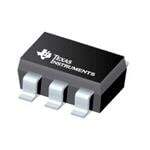
 Datasheet下载
Datasheet下载

